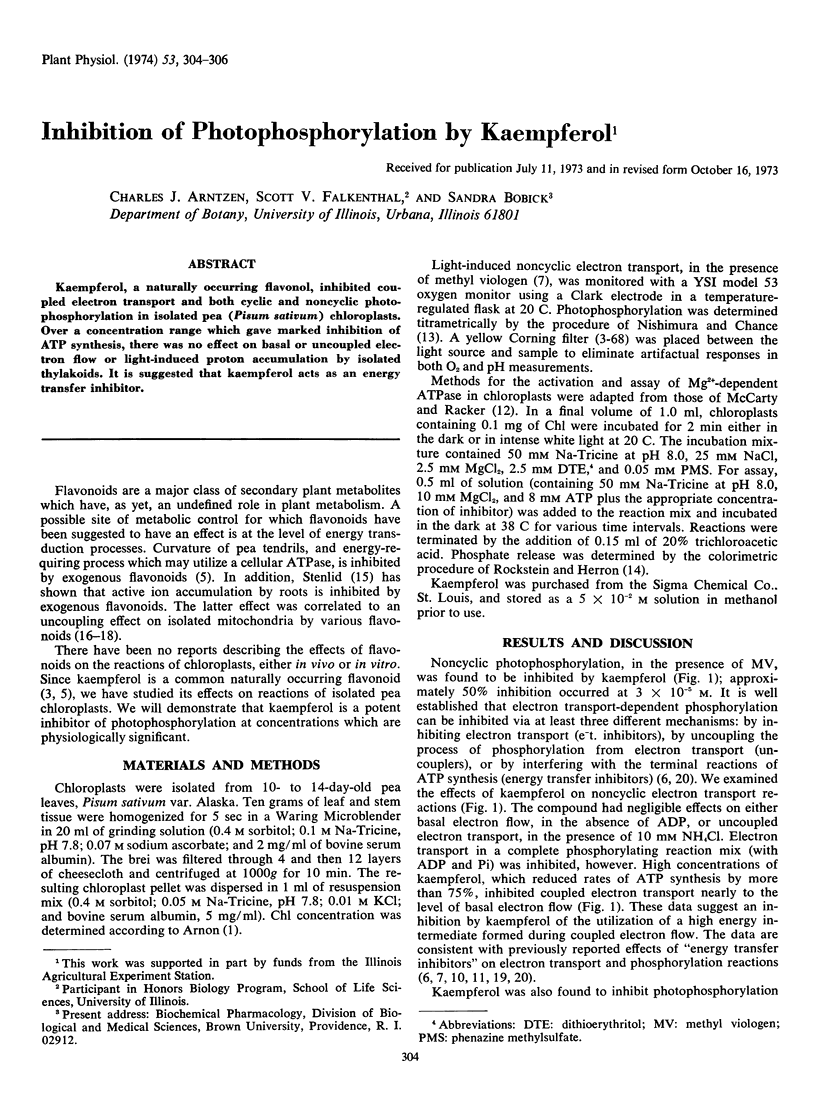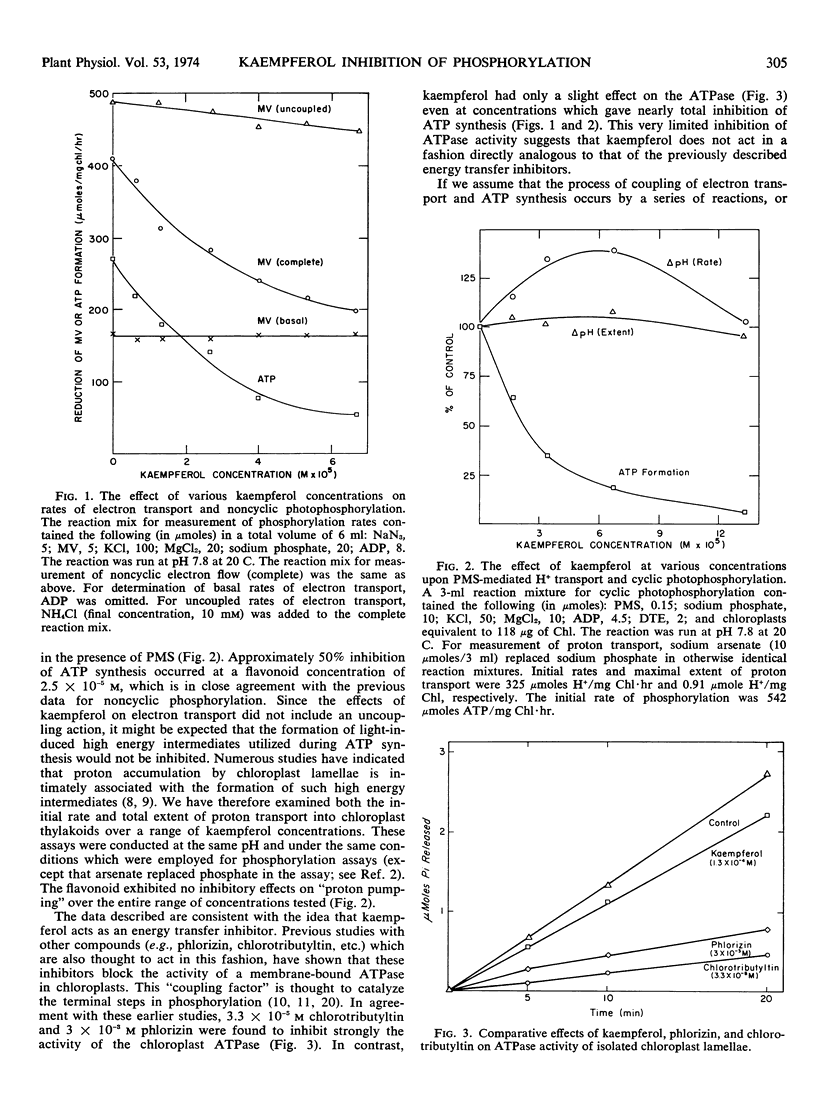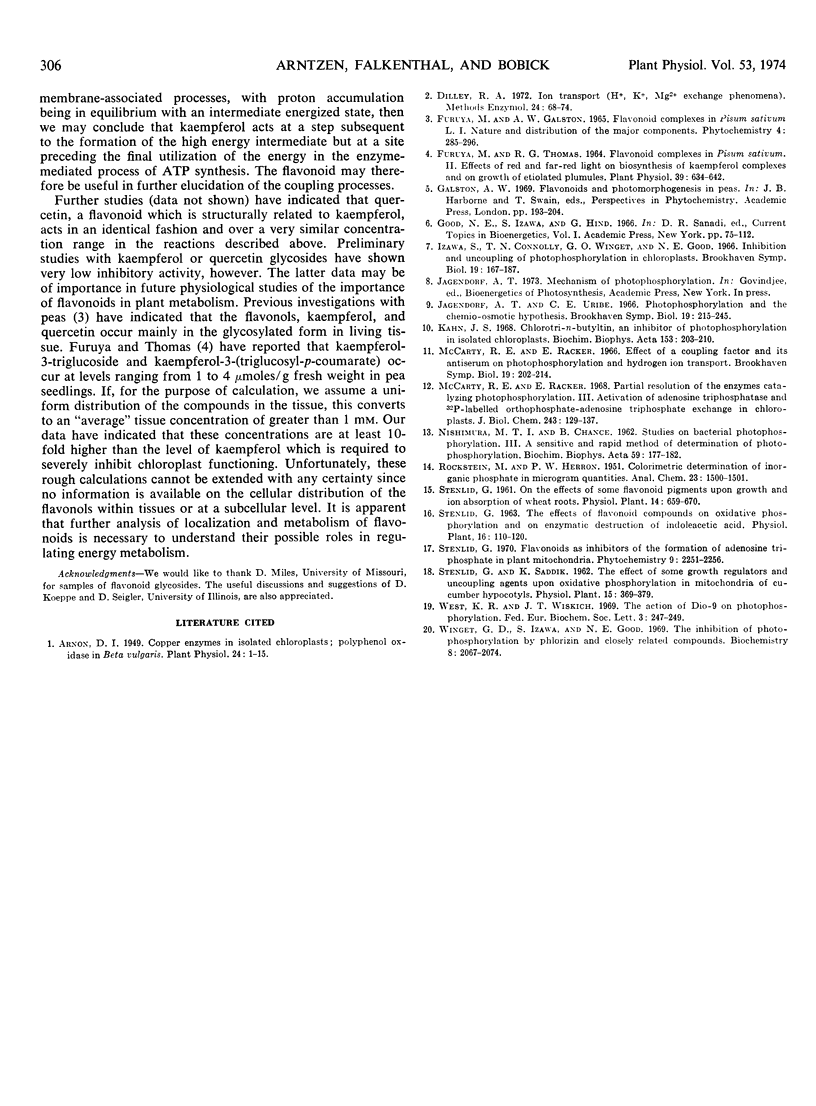Abstract
Kaempferol, a naturally occurring flavonol, inhibited coupled electron transport and both cyclic and noncyclic photophosphorylation in isolated pea (Pisum sativum) chloroplasts. Over a concentration range which gave marked inhibition of ATP synthesis, there was no effect on basal or uncoupled electron flow or light-induced proton accumulation by isolated thylakoids. It is suggested that kaempferol acts as an energy transfer inhibitor.
Full text
PDF


Selected References
These references are in PubMed. This may not be the complete list of references from this article.
- Arnon D. I. COPPER ENZYMES IN ISOLATED CHLOROPLASTS. POLYPHENOLOXIDASE IN BETA VULGARIS. Plant Physiol. 1949 Jan;24(1):1–15. doi: 10.1104/pp.24.1.1. [DOI] [PMC free article] [PubMed] [Google Scholar]
- Dilley R. A. Ion transport (H+, K+, Mg2+ exchange phenomena). Methods Enzymol. 1972;24:68–74. doi: 10.1016/0076-6879(72)24055-1. [DOI] [PubMed] [Google Scholar]
- Furuya M., Thomas R. G. Flavonoid Complexes in Pisum sativum. II. Effects of Red and Far-Red Light on Biosynthesis of Kaempferol Complexes and on Growth in Etiolated Plumules. Plant Physiol. 1964 Jul;39(4):634–642. doi: 10.1104/pp.39.4.634. [DOI] [PMC free article] [PubMed] [Google Scholar]
- Izawa S., Connolly T. N., Winget G. D., Good N. E. Inhibition and uncoupling of photophosphorylation in chloroplasts. Brookhaven Symp Biol. 1966;19:169–187. [PubMed] [Google Scholar]
- Jagendorf A. T., Uribe E. Photophosphorylation and the chemi-osmotic hypothesis. Brookhaven Symp Biol. 1966;19:215–245. [PubMed] [Google Scholar]
- Kahn J. S. Chlorotri-n-butylin. An inhibitor of photophosphorylation in isolated chloroplasts. Biochim Biophys Acta. 1968 Jan 15;153(1):203–210. doi: 10.1016/0005-2728(68)90161-8. [DOI] [PubMed] [Google Scholar]
- McCarty R. E., Racker E. Effect of a coupling factor and its antiserum on photophosphorylation and hydrogen ion transport. Brookhaven Symp Biol. 1966;19:202–214. [PubMed] [Google Scholar]
- McCarty R. E., Racker E. Partial resolution of the enzymes catalyzing photophosphorylation. 3. Activation of adenosine triphosphatase and 32P-labeled orthophosphate -adeno-sine triphosphate exchange in chloroplasts. J Biol Chem. 1968 Jan 10;243(1):129–137. [PubMed] [Google Scholar]
- NISHIMURA M., ITO T., CHANCE B. Studies on bacterial photophosphorylation. III. A sensitive and rapid method of determination of photophosphorylation. Biochim Biophys Acta. 1962 May 7;59:177–182. [PubMed] [Google Scholar]
- Winget G. D., Izawa S., Good N. E. The inhibition of photophosphorylation by phlorizin and closely related compounds. Biochemistry. 1969 May;8(5):2067–2074. doi: 10.1021/bi00833a043. [DOI] [PubMed] [Google Scholar]


